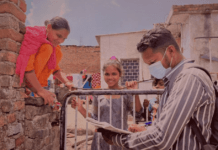Research by Isha Malaviya
Edited & Presented by Sumit Krishna Yadav
Internet shutdowns and instances of web censorship have become a common occurrence in the country. To put this into perspective, out of 213 documented shutdown in the world, India accounted for 121. The closest country was Venezuela at a relatively mere 12 instances. Moreover, the internet shutdown in Jammu and Kashmir placed India as the country with the longest ever internet shutdown in a democracy. With a ubiquitous acknowledgement of digitization, be it digital payments or healthcare infrastructures, it’s perplexing to observe such an immense number of internet shutdowns. Whether it’s the blocking of telecom services during protests or censoring the websites of environmental advocacy groups, the internet has become seemingly inaccessible for certain sections of society, hereby, having major implications. How does this censorship work? What laws and policies make the implementation of internet shutdowns possible and at such a scale? What have been the implications of such shutdowns and blockades on individuals and societies? Finally, are there enough redressal mechanisms and do they seem to work? Let’s try and find out.






I am a technology lover and I like to read such types of articles. This has the most common problem in India. Countless time I face these problem.